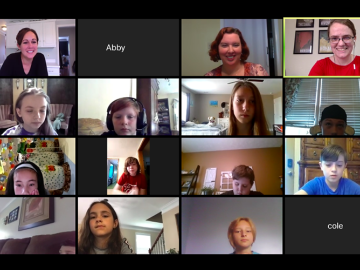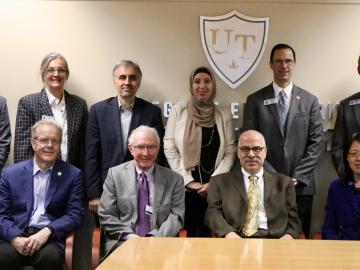
Filter News
Area of Research
- (-) Materials (67)
- (-) Nuclear Science and Technology (15)
- Advanced Manufacturing (4)
- Biology and Environment (25)
- Computational Biology (1)
- Computational Engineering (2)
- Computer Science (9)
- Electricity and Smart Grid (1)
- Energy Science (93)
- Functional Materials for Energy (1)
- Fusion and Fission (9)
- Fusion Energy (7)
- Materials for Computing (11)
- Mathematics (1)
- National Security (19)
- Neutron Science (125)
- Nuclear Systems Modeling, Simulation and Validation (1)
- Quantum information Science (9)
- Supercomputing (76)
- Transportation Systems (2)
News Topics
- (-) Advanced Reactors (14)
- (-) Artificial Intelligence (9)
- (-) Clean Water (3)
- (-) Neutron Science (38)
- (-) Quantum Science (11)
- (-) Transportation (14)
- 3-D Printing/Advanced Manufacturing (26)
- Big Data (2)
- Bioenergy (12)
- Biology (4)
- Biomedical (8)
- Buildings (5)
- Chemical Sciences (32)
- Composites (9)
- Computer Science (19)
- Coronavirus (5)
- Critical Materials (13)
- Cybersecurity (5)
- Energy Storage (34)
- Environment (16)
- Exascale Computing (2)
- Frontier (3)
- Fusion (15)
- Grid (5)
- High-Performance Computing (4)
- Irradiation (1)
- Isotopes (16)
- ITER (1)
- Machine Learning (5)
- Materials (73)
- Materials Science (79)
- Mathematics (1)
- Microscopy (27)
- Molten Salt (7)
- Nanotechnology (39)
- National Security (3)
- Nuclear Energy (49)
- Partnerships (11)
- Physics (30)
- Polymers (17)
- Quantum Computing (3)
- Security (2)
- Simulation (1)
- Space Exploration (7)
- Summit (2)
Media Contacts

With Tennessee schools online for the rest of the school year, researchers at ORNL are making remote learning more engaging by “Zooming” into virtual classrooms to tell students about their science and their work at a national laboratory.

In the 1960s, Oak Ridge National Laboratory's four-year Molten Salt Reactor Experiment tested the viability of liquid fuel reactors for commercial power generation. Results from that historic experiment recently became the basis for the first-ever molten salt reactor benchmark.

In the race to identify solutions to the COVID-19 pandemic, researchers at the Department of Energy’s Oak Ridge National Laboratory are joining the fight by applying expertise in computational science, advanced manufacturing, data science and neutron science.

Oak Ridge National Laboratory researchers working on neutron imaging capabilities for nuclear materials have developed a process for seeing the inside of uranium particles – without cutting them open.

A software package, 10 years in the making, that can predict the behavior of nuclear reactors’ cores with stunning accuracy has been licensed commercially for the first time.

As scientists study approaches to best sustain a fusion reactor, a team led by Oak Ridge National Laboratory investigated injecting shattered argon pellets into a super-hot plasma, when needed, to protect the reactor’s interior wall from high-energy runaway electrons.

Students often participate in internships and receive formal training in their chosen career fields during college, but some pursue professional development opportunities even earlier.

ORNL and The University of Toledo have entered into a memorandum of understanding for collaborative research.

A modern, healthy transportation system is vital to the nation’s economic security and the American standard of living. The U.S. Department of Energy’s Oak Ridge National Laboratory (ORNL) is engaged in a broad portfolio of scientific research for improved mobility

Researchers at Oak Ridge National Laboratory proved that a certain class of ionic liquids, when mixed with commercially available oils, can make gears run more efficiently with less noise and better durability.


